11 Rites of Passage for Every DIY Mechanic
Read all the books you want. Watch all the TV shows and YouTube mechanic videos that have ever been filmed. Sit and have a conversation with everyone who has turned a wrench. You still won’t be a mechanic, because practice and experience cannot be taught.
When younger enthusiasts recount certain adventures (or misadventures) to those with a few more years in the hobby, the seasoned folks will nod along. A mechanic’s rites of passage often need no explaining; by definition, these experiences have become universally accepted as ones that you must encounter and conquer to become proficient.
Which of these 11 rites of passage have you experienced, and which do you think changed you the most?
Rite of Passage #1: Roadside repair with makeshift parts
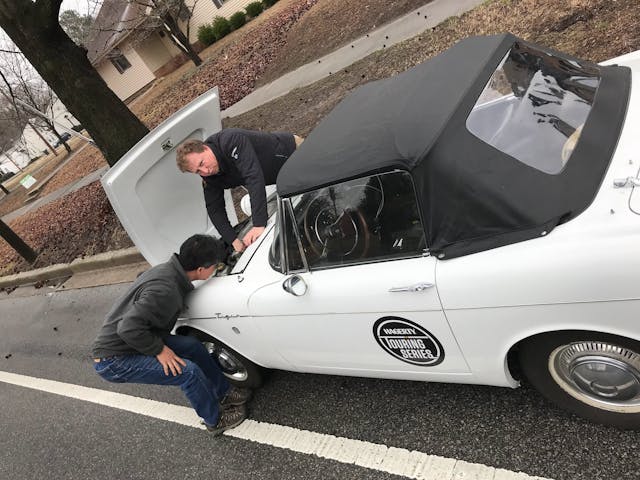
Whether on the road or in the shop, there comes a time when what you have is all you’ve got, and what you have just needs to work. Gaskets cut out of beer packaging, throttle cables made of shoestrings, or bailing wire on a part or piece that should be properly connected, but isn’t … If you understand a system well enough to engineer a functional fix on the fly, you truly understand how that system works.
Rite of Passage #2: Busted knuckles
You know the bolt is about to break free, so you give it a little extra oomph—and slam your hand into something. Usually, that something is heavy, rusty, or sharp … possibly, all three. Keep a record of your last tetanus shot handy, and know that we’ve all been there. Pulling towards yourself is often safer, except when it comes to cutting tools or other sharp implements.
Rite of Passage #3: Trapped tools
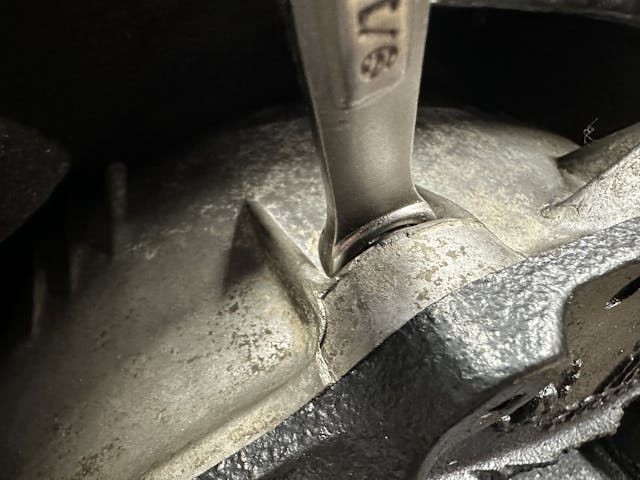
The order of operations during disassembly and assembly is important—but you’ve got to pay attention to your tools, too. We’ve all been in situations when the excitement of a bolt coming loose makes us forget the limited space we’re working with, and suddenly our wrench is trapped between a bolt and a hard place.
Rite of Passage #4: Broken hardware
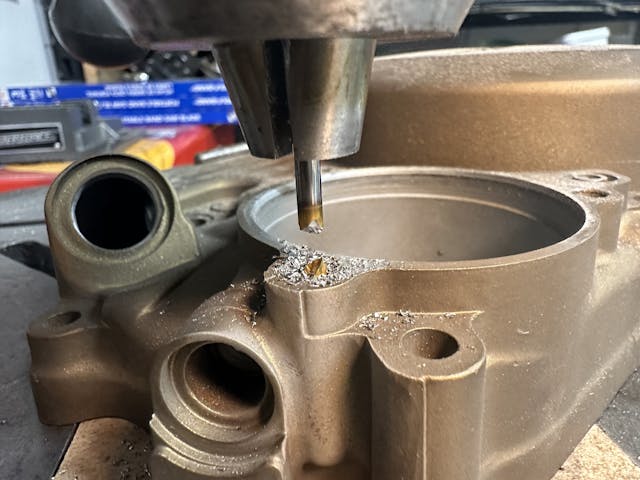
When a bolt chooses to Marie Antoinette itself, or threads stretch past the plasticity point and become unusable, progress can get tough. The fact of the matter is that rookies are more likely to break hardware, but there is a bit of a bell curve: As you tackle more and more projects, the quality of your work often rises; and then, as you gain confidence to handle the problems you now expect to encounter, the quality of your work tends to dip. Learning new methods for dealing with broken and stuck hardware is a never-ending quest for any wrench, green or seasoned.
Rite of Passage #5: Buying the shop manual
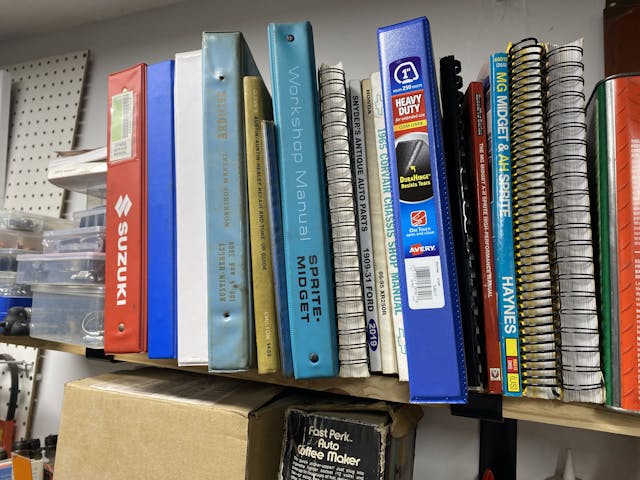
Just about everyone went through a phase when they felt as though they knew everything. Most advance out of such a state to understand that, even with everything they know, the shop manual knows more. Learning just how important and helpful a shop manual can be is often a freeing experience: Buying one is the first step to being self-sufficient because it allows you to solve problems without calling in experts or endlessly searching the web.
Rite of Passage #6: Disappearing parts

How else are you going to learn to organize your shop if you never experience the mildly panicked search for something you sat down right there? Everyone who ever gave you advice about doing DIY work probably told you to bag and tag parts and hardware, but most of us had to learn the benefits of organization the hard way to truly understand them.
Rite of Passage #7: Endless parts search
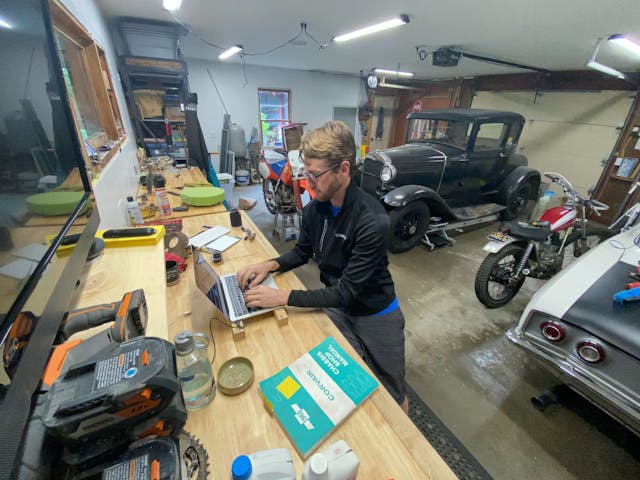
You saw that cool hunk of metal on the side of the road and just had to have it. Now you got it home and are excited to get to work and … Wait, there are no parts available for this? Sometimes the coolest models are the ones with the most problems and buying one that needs everything without realizing none of the parts exists is the gearhead’s version of falling in love with a crazy person: You often can’t give them what they need, and if you try, you’re going to be doing a lot of work (and probably spending a lot of money).
Rite of Passage #8: First rebuilt engine start-up
The thrum of a well-tuned engine is magnificent, but the stutter and cough of one chugging to life for the first time is even more enthralling. Was everything assembled correctly? Was anything forgotten? How is the combination of parts you chose going to work together? It all becomes clear with the first touch of the key. Weathering that storm of nerves is an experience unlike any other.
Rite of Passage #9: Ruined clothes
It was supposed to be a quick, clean job. Now that pair of jeans that used to be nice is stained with oil. (The situation is even worse if you’ve just ruined a pair of pants that your significant other specifically told you not to wear in the garage.) Typically when doing DIY work you dress to protect, not to impress. Hubris may protest, calling that an obvious truth, but the drawer of “work clothes” indicates we occasionally need a reminder.
Rite of Passage #10: Inclement weather moving in

Having a garage is a luxury that some of us take for granted. Most of us started by working on whatever we had wherever we could: Laying on our backs in gravel driveways, sitting cross-legged on the dirt of the back yard, or even leaning over core supports on the side of the street. If the sun was shining when you started work, your lack of protection from the elements becomes obvious as the clouds gather and the wind picks up. Being soaking wet, cold, and/or dirty while trying to assemble or diagnose your car is not fun, but we all must experience this misery to truly appreciate mild weather and good shelter.
Rite of Passage #11: Fixing what is not broken

The excitement to work on a project is sometimes so great that it must be satiated—even when there is work that needs to be done. I personally recall my father giving me the “if it ain’t broke, don’t fix it” speech while in my early teens; I had just made a mess of the garage floor taking apart something that had worked when I started and, more than likely, would never work correctly again. Poor thing.
Do you have to go through all of these to be a decent mechanic? Of course not, but many of us have experienced most, if not all, of these and more. Think we missed a rite of passage that changed you? Let us know about it in the comments below.
***
Check out the Hagerty Media homepage so you don’t miss a single story, or better yet, bookmark it. To get our best stories delivered right to your inbox, subscribe to our newsletters.
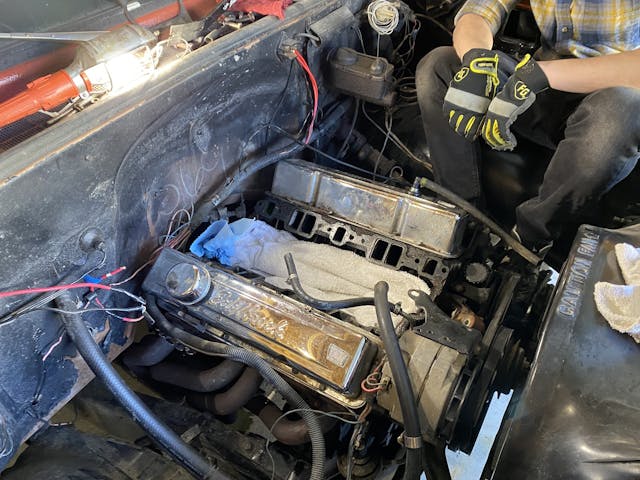


My first car was a 78 Fleetwood Brougham that stopped running and resided in a parking spot behind the homestead before I came up with the ‘if I get it running it’s mine’ proposal. First mission was purchase of a Chiltons manual. I spent a lot of time tinkering on that car and messing with things I probably shouldn’t have before I figured out the problem was a bad starter solenoid. I then spent some additional time fixing all the things I broke figuring things out.
There are so many hurdles to be hurdled, so many ways for knuckles to be busted, and so many lessons to be learned that no list can hope to contain them all – but this one is pretty good. It’s important to remember that vehicles all have some things in common – there are also drastic differences between working on a 2-stroke motorcycle, a large displacement American V-8 from the ’60s, and a 4-cylinder European putt-putt )and thousands of other examples). So always think about the next challenge, always look to expand your knowledge and skillset, and always take pleasure in the satisfaction that can come from just plain “fixing” something!
my dad gave me a 1969 javlin the starter went bad this was in 1974 i had ben driving for one year so i went to western auto to price a new starter back then if i rember right it was about 39.00 dollars and i dident have the money so some older guys i talk to told me to change the brushes now i had never taken a starter off but i wanted to get rolling so itookthat starter apart no book no instructions replaced the brushes and it was fixed and that 383 motor started and i was back on the road i was 17teen years old
You mean a Javelin? Then it’s a 343.
Yep…done them all, repeatedly! Builds character.
I had a 59 BugEye Sprite when I was 19, the started stopped working, and similarly, I had no money for parts, so my dad told me to go buy a Bendix spring, remove one bolt, replace spring ($3) never had a starter problem again. Thanks Dad, I guess he knew some stuff after all.
My dad passed last month at 95, he was one of a choice few people I knew who knew enough about cars to write a book, appreciate the knowledge and experience your dad may have passed on to you, and pay it forward to anyone you know that has the bug!
Michael,
Your dad’s advice about changing the Bendix spring (a simple, $3.00 winner!) was obviously a good DIY lesson! However ever, more importantly, the part about appreciating what dad taught you is an EXCEPTIONALLY GOOD day-to-day life lesson.
Good work, Mike.
Nickz
King of the run-on sentence!
FAQ
FAQ remark
LOL I’m assuming you’re meaning
FA….heavy pause….Q love it!
That’s the best way to learn not using a manual you will never forget how to work on that starter.
Here are some more.
Finishing a job and having parts left over and wonder what you missed.
The one I find most satisfying. Driving a wounded car in under power that is in need of work. This is a practice in problem solving, driving skills and sometimes skirting the law.
You do not want to pay that tow bill and in your younger days you tell yourself I can get it to work or home to fix. Here are some of my drives.
The 1960 Bonneville that had a broken engine mount and wanted to idle at 50 MPH.
The 1966 Catalina that really did not want to run and I had to time lights to make sure I did not have to stop to keep it running.
1963 Ford Galaxie that lost the single pot master cylinder on the way to work after coming our of long term storage. The E brake worked great.
The 1968 Chevelle SS that lost a clutch. It would not disengage and I drove it home up shifting and down shifting with never coming to a stop with out using the clutch.
Three times I drove customers cars to the shop in reverse. They lost all forward gears and they were about a mile from the shop. Two times I stuck to side streets and one I drove down main street 6:30 AM Sat to get it to the shop.
1966 Corvair convertible we got running late one night for the first time since 1968. This was the 1980’s.
It had no head lamp, buckets and the hood was held down with a rubber strap. The faster you went the higher the hood would go. Oh no windshield.
I lost a thermostat in a 1976 Buick 5 miles from home. I would drive it till hot then cool then hot and cool. No real overheating but a lot of short hops.
Driving home 2 hours with my 1985 Fiero with a bad converter lock up solenoid. I could not stop as it would stall and not start with the solenoid locked. Made it home and changed it there.
Finally I went with a buddy to pick up a Road Runner that lost a front wheel bearing. We were coming back with it on the hook of a tow truck. Well the truck ran out of gas as the gauge did not work and his brother never filled it. It was mid night Sunday and I got in the Road Runner and followed hand signal to use the Road Runner to push the tow truck to the nearest gas station several miles away.
The truth is in all of this it is all about problem solving had how determined you may be. You know how to fix the car but you need to get it there.
I did have one repair I was proud of. Late Saturday night with a storm coming in my 1968 Chevelle SS with a tunnel ram and a hole in the hood for two carbs. I lost a starter. I had no starter at my buddies house.
We did find a Pontiac starter and i took the nose cone from my old Chevy starter and added it to the Pontiac starter. It bolted on and was on the car when I sold it. I change the starter in the drive way in the dark with lighting flashing all around. It felt like a moving. I did get home about 5 min before a down pour.
As for busted knuckles that is just a right of passage. I have given much blood on a number jobs. Often you don’t notice it till it drips. If you never blead on a car then you have never worked on one.
I had a 76 Camaro that popped a front brake line, so I cut it in half and threaded a machine screw into the remains of the rubber line and drove it that way until I rounded up the scratch to get a new brake line (the good ol’ days). After I fixed it, I had to retrain myself to stop pulling the steering wheel to the left every time I hit the brakes
@hyperv6 Sounds like many of my projects I acquired over the years. Gotta improvise!! Kinda fun really!!
I was working on my 83 Goldwing, trying to grind off a few metal tabs so I could switch out the false tank to make it look like the older 1977 model. But then, the grinding wheel broke and went flying out of my hands, cutting through most of the main wiring harness on its way to the shop floor. So, my project suddenly got a lot bigger. I ended up making a new, updated harness that included some modern technology.
I had that 77 Goldwing in yellow and black. The four carburetors were my undoing. They worked great at 1000 feet msl but before I really understood the affect atmospheric pressure had on them I took it over the continental divide. I’ve never experienced more backfires since.
To me some of these deals are like trying to get a battle damaged B17 back from Germany. Those guys under extreme conditions improvised and out of pure will power got many of these planes back. I read where one 17 was on top of another 17 and they got them out of Germany and avoided capture. While my projects were never that dire I always associated it with them. The feeling you have when you get where you are going and the relief was amazing. The term is never give up.
Check out some of the vids on YouTube by Yarnhub , there are plenty of them relating to shot up B-17s. There is one they worked with the band Sabaton.
it is about the Brown- Stigler incident, where a Me109 escorted a B-17 to safety.
l like to think that a lot of guys made it back thanks to their Studebaker-built engines! Stude built over 63,789 Wright Cyclone R-1820 radial engines for the B17 – the vast majority.
Ford F350 pickup with diesel and manual transmission…….firewall flex was so bad the clutch would not fully engage…..started in 2nd and shifted without clutch to high,,,,,,drove from Chicagoland to mid Michigan in high gear in the days of pay toll booths. I had the change ready for the tolls late at night rolled through throwing correct change each time…..made it without stopping……..thank goodness for torque and a manual transmission…..firewall reinforced with a plate made to fix this issue and the truck lived on for years….
“Finishing a job and having parts left over and wonder what you missed. ”
The definition of a carburetor is a device that is so complicated that if you take it apart enough times you will eventually have enough parts left over to make another identical one.
Someone up there is watching over you.😏
I rebuilt the carbs on my 1963 Porsche in 1969 and had a couple of leftover parts. Decided to put the carbs back on and see what would happen thereby providing a clue as to what is amiss. Car ran fine and now 55 years later it is still running fine. The parts stayed on the workbench for many years and eventually disappeared. Broken clutch cable on a 1961 VW Beetle, Drove from Boston, MA to Portsmouth, NH and learned how to slip into and out of gear without the clutch. Ran most of the lights, however, had to stop due to traffic once in a while where I learned that the starter motor could move the car in first gear and the engine would catch. In 2002 the accelerator rod broke in my Porsche at the toll booths. Attendant told me she would call a tow truck, whereupon I pushed the car out of the way and into a parking lot. She told me I couldn’t do that, I replied that I think I just did. Looked under the car and called my son-in law. Figured he owed me for sleeping with my oldest daughter. Told him where to find some 12 gauge wire in my garage and where my wire strippers were and I needed my vice grips. He showed up and I spliced the accelerator rod back together and continued on my way. I don’t remember if I ever paid the toll.
I had a 67 VW bug and the throttle cable broke off at the pedal. Rainy Christmas eve. I pulled the cable all the way out of the back tube. I then used the hoop on the bumper as a “pulley”
I then ran the broken end through the driver side rear flip window and reached back behind my seat to pull on the throttle cable. I completed the drive it to my then girlfriends house and back to my house in a pouring northern calif rainstorm. It was about 1 hour total drive. She is now my wife of 36 years, so I guess it was worth it.
BTW I later learned that VW throttle and clutch cables often go bad because the ground strap from the motor to the body is missing or compromised causing the cable to have too much current through them.
The Roadside fixes have also changed as years roll by – how about using my girlfriend’s nylons for a broken belt in my 1967 slant six GT Convertible. They worked so well it took a while for me to replace it with a new belt. Where are you going to find nylons today?
I too have done the drive in reverse to not pay for a tow.
I was in high school auto shop, so I was able to do work on my car in class. I had a 67 Fury in need of a transmission and had everything set up and just needed to get the car to the school, but I only had reverse.
I waited until midnight and drove to the school about 3 miles away. I had it all figured out. I drove on the wrong side of the road so any time I spotted another vehicle coming (could have been a police car), I would pull to the side of the road as if I were parallel parking. I stayed on the back roads as much as I could, and it worked. My shop teacher thought I was nuts, but I said no, just poor.
The loosing the clutch story happened to me just a year ago on an 06 Mazda 6…made an interesting ride home.
You are definitely in the winners circle of this post. You’ve got grit, and I can relate- many similar experiences, but yours are outstanding. I’m always happy when I draw blood because I know then it’s going to work. if you don’t draw blood, it might not work.
LOL great stuff HyperV6! I have done the “not stopping for anything because it will never start again” thing and the thermostat thing when I was younger. Also blowing out the flames from a leaky 4BB carb in my Roadrunner in the Burger King parking lot during high school in the early 80’s. However, I call your bloody knuckles and raise you 11 stitches in my right hand, drove to the Urgent Care with my just my left hand while applying direct pressure to the right hand (umm, that was just a few years ago though… Now I got a nice pair of those “Mechanix gloves!” However, nothing beats your pushing a tow truck from behind with a “hooked-up” roadrunner story!
One more finding you need that one last gasket or part at 12:30 AM before a car show or race the next day.
My painter let me down on my custom hood and I was left without a hood at midnight. I had to go pull the original hood out of storage and buff, polish and install it for the show. I finished at 4 AM and left for the show at 6:30 AM. Won my class.
Hyper6V I think you need to write a book. Or at least a column for Hagerty. You made me shoot coffee out of my nose. It was totally worth it.
Ramsey,
Iced or hot coffee?
Oil stained Jeans just add charactor. Id rather wear those than the phony Jeans with ripped knees & the like that people spend big bucks for.
When I was in my teens, if your jeans were ripped, you probably had a good story to tell! 😉
When I was in my teens, if your jeans were ripped, someone would grab hold of the tear and finish the job
Glad to know most people have learned a little respect since that time and understand they have no right to tear apart my clothes just because they want to. I wouldn’t tolerate them putting hands on my car, why is putting hand on my person and clothes any different?
Rite of Passage #12:
Having to ask someone for a ride because you (the car guy) can’t get your car running.
Don’t forget battery acid holes
The only way I ever got my jeans to have those “stylish” rips was baling hay…thousands and thousands of small square bales. My question is…how did that ever become stylish among all these people that have never touched a bale of hay or even know anybody that has?
I bought one of the first round bailers in my district .
My back still hurts from humping all those thousands of bails.
I tell people who are entering the automotive repair field all the time being a good technician is being able to see problems before they happen. This only comes with experience. Being able to see rusty exhaust studs need heat BEFORE attempting to remove them, cleaning debris around an intake manifold BEFORE it is removed. Starting spark plugs always by hand first BEFORE using the ratchet. These are simple examples but as the saying goes you don’t know what you don’t know. When you first start out simple things are not obvious. It’s hard teaching someone who is interested but has no experience because you truly have to start at square one.
I believe there is a Rite of Passage #7.5: The Leftover Fasteners. We’ve all done it…
This put a smile on my face. We all have stories to tell. Just think back. The trials and tribulations. Hell I’m sure we’re still doing some of the same thing, just better prepared.
Missing/lost 10 mm socket. You know what I mean.
I’ve seen the bags of screwdriver bits for sale. Why not 10mm sockets?
Harbor Freight has a package of different 10mm now.
I know my set has an 11mm. There’s an empty space RIGHT THERE from when I organized it last year…
How about buying a metric socket set because you lost your 10mm and the only store in town only sells sets. When you open it up to get the 10mm out there is no 10mm ,but two 11mm’s AAAAARRRRGGGGHHHH
Changing oil and finding out the oil filter center hole was never tapped at the factory
I want to be there when some day some scientist discovers the worm hole the tools and nuts and washers and bolts fall through. Sometimes it’s me, like when the shop manager handed me the 7/16 combination wrench they found on the bleeder screw when the car was in for inspection.
So true, this unseen vortex that eats up washers and nuts and bolts too!
I’m from Appalachia and My Father like others here quit school and went to work when he was a very young man and never learned to read or write When I was about 10 years old I would read him the instructions on how to do some of his projects. What amazes me to this day is the fact that even though he couldn’t read or write he could take most any car part apart and repair it and put it back together and it would work like it was supposed to. Looking back it was a wonderful bonding and learning experience for me and I treasure the memories.
Mine’s been living inside a hollow, bowed in the middle crossmember in my Nissan Frontier’s frame. For two years. Have a magnetic probe long enough to reach halfway across from each side. No socket. I guess it’ll be there forever…but then I found it in the back of a derelict Renault in a junkyard, so it’s coming around full cycle.
And it’s ALWAYS the 10 mil socket!
The ½” sockets can run pretty scarce as well.
The rush to the late night auto store on Ocean Avenue in San Francisco. Only one 1⃣ open till 11pm. Or many others always in a panic to get it running before work. Always a panick always found something to work.
11pm running I75N in Michigan, 73 montecarlo small block alternator and wp belt snapped at 70mph, coasted up a convenient off ramp to parts store and slept in car until 9am…got new v-belt and kept on…
Was it Grand Auto, or that small shop rune by the old guys?
“Have a place for everything and then keep the thing itself someplace else. This is not advice, merely common practice.” Mark Twain.
also part of the fun are –
#12 figuring out what to do, or needs/wants to be done – what’s wrong, + how to fix it – and alternatively, dealing with frustration + loss – things that are damaged, can’t be fixed, wornout, gone, or need to go.
#13 learning something new about your machine, auto mechanics, yourself + life in general – and getting away from everything else and everybody – while you’re blissfully at work.
#14 getting a NEW TOOL to do the job – whether it’s really necessary or not, it’s a new toy or treasure.
#15 wondering which way to put a part into place, or how something came apart and fits back together.
#16 finding the part or task that you FORGOT to include, or do, or did wrong – and then having to backup + undo or retrace your work to fix that oversight or mistake. wishing you’d done something differently.
#17 finding LEFTOVER PARTS (unexpected “spare parts”) when you’re through – asking “opps, where did this one come from + where does it go”? (seems to happen a lot with Fords, but might just be my choice of cars.)
#18 needing some parts again that were thrown away, or otherwise now gone forgever.
#19 FABRICATING what you need + can’t get – or getting by without it, when you can’t get one. (sometimes tincans like Campbells tomato soup cans make great stock.)
#20 leaving off or chopping out what you don’t what – like air pumps + positive crank case ventilation.
#21 modifying or making something new or better, than it was originally. upgrading or even adding aftermarket bling, like dual point distributors and headers to hop things up in the past.
#22 painting it the color you like.
#23 cleaning everything up, + straightening out your tool box, work area + garage.
#24 admiring your work – while living with the marks, spills, + other mistakes.
#25 jacking it up + down the right way.
#26 crawling under + upside down, climbing onto or even into things – works best with pickup trucks.
#27 taking a break – like going to the kitchen, fridge, + BR. just don’t smoke near the fuel.
#28 stopping to answer the phone, help your kid/spouse, eat meals, get mail, or do other necessary things.
#29 explaining what you did, are doing, + are going to do next, to lucky bystanders.
#30 enjoying the smell + feel of things, while you’re working, + after it too. answering “what’s that smell?”
#31 starting it up, trying it out – then getting it out of the driveway, into the street + back on the road again. wondering/hoping if you did it right – like applying the brakes hard while going down that first big hill.
#32 feeling good + happy/relieved about doing the job – proud that you could do, + then did it. feeling cool.
#33 paying the bill$. having done it better than somebodyelse would, or maybe even saved a buck by DIY.
#34 + how bout you? cheers + keep on wrenching + driving / sn
Some good stuff, daddy stev. Regarding #15, I’m thinking this is one of the small handful of reasons we should all appreciate having a smartphone (still doesn’t balance out all of the PIAs, though). Back in the day, you had to a) remember, b) have a friend who remembered, c) make a drawing, d) find an illustrated manual, or e) just flat get lucky. Nowadays, you can pull out that phone, take a gazillion photos and/or videos (even recording your steps as you pull that tricky sucka out for replaying when it goes back in).
Breaking open automatic transmissions were the biggest terror for me in the early times. Oh if I’d only had a smartphone in those days! Wiring was another area where I grabbed paper and pen to document things (’cause I could never read those OEM-produced spaghetti messes). I still have some of my rudimentary drawings/steps of “how to reassemble x,y,z” in a drawer from my building days. A couple of them I’ve scanned into my laptop since I still have the need for them once in awhile – the rest are just fond, nostalgic memories.
– Pulling an engine for the first time
– Rebuilding an engine or transmission (successfully)
This can apply to cars, motorcycles, etc.
and the beat goes on, + on –
#35 working late at night / up all night / your own choice of hours, whenever you want.
#36 being in charge – fixing things + doing your own way. like tuning your engine the old fashioned way (see other Hagerty article), including gapping the new plus + points, and setting the timing, with chalk on the timing marks and pointer, and a xenon timing light (yeah).
#37 pushing your inert car to move it around.
#38 drilling + punching holes in all kinds of places. making things fit. using the big XXXX hammer.
#39 knowing what you like and getting to work on it, sharing it with similarly minded folks – very existential.
#40 feeling young again. remembering the good old days. txs, Hagerty.